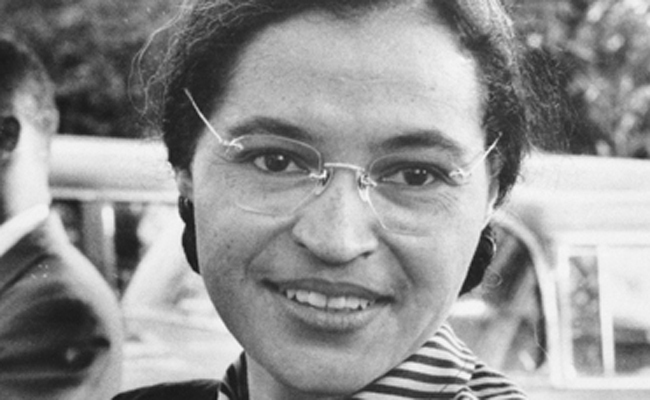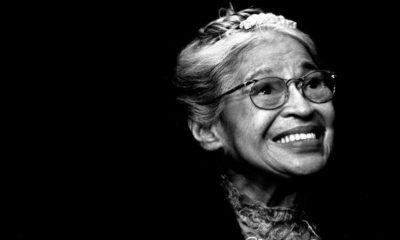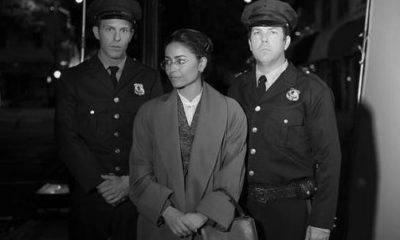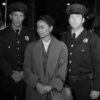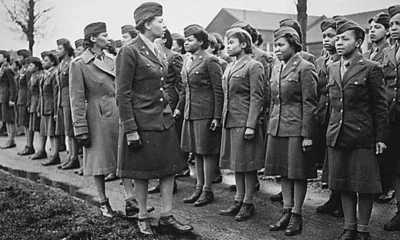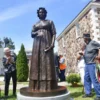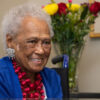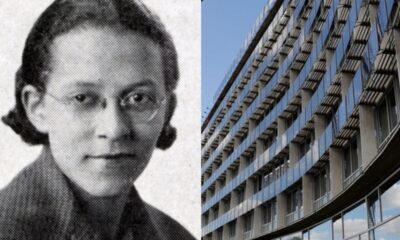Black Women in History
10 Facts you Might not Know about Rosa Parks
Rosa Parks was born on February 4, 1913 in Tuskegee, Alabama. She’s most know for what happened 42 years later, on December 1, 1955. Parks boarded bus 2857 in Montgomery, Alabama, on her way home from work as a seamstress at a department store. When she was instructed to give up her seat for a white man, she refused and was arrested for violating Montgomery’ s racial segregation laws.
This resulted in the 13- month Montgomery Bus Boycott, led by Martin Luther King, Jr.
You likely already know that storyline, but here are 10 surprising facts you may not know about the civil rights activist and the Montgomery Bus Boycott.
- Parks was not sitting in a whites-only section on that bus. Rather, she was in the front row of a middle section of the where African Americans could sit if there were open seats. It was only when the whites-only section was filled, leaving
one white man with nowhere to sit, that the bus driver demanded Parks and three other African-Americans in the row leave their seats. The other three did as they were ordered but Parks refused.
2. Parks was not the first African-American woman to disobey orders to give up her seat for a white person. That honor goes to 15-year-old Claudette Colvin who was arrested for this offense on March 2, 1955, nine months before Parks was jailed. Three other African-American women – Aurelia Browder, Mary Louise Smith and Susie McDonald had also broken the bus segregation law in the year preceding Parks’s arrest.
3. Parks was already a civil rights activist long before her arrest, so her actions did not come out of the blue. She was a member of the Montgomery Chapter of the National Association for the Advancement of Colored People (NAACP), which had been working for years to find ways to confront segregation on buses. Specifically, the NAACP had been looking for a plaintiff to test the constitutionality of the Jim Crow laws and Parks became that person.
4. Her act of disobedience was not pre-meditated. Refusing to give up her seat for a white man was a calculated decision but not planned for that specific day. “I got on it to go home,” she said. She also was not tired, as some have supposed. “I was not tired physically, or no more tired than I usually was at the end of a working day,” she later said. “I was not old, although some people have an image of me as being old then. I was forty-two. No, the only tired I was, was tired of giving in.”
5. Parks had had an earlier run-in with James Blake, the bus driver that day. In 1943 he kicked her off the bus when she refused to re-enter the vehicle at the back entrance after she had paid her fare.
6. A one-day boycott was planned in protest at Parks’s arrest, but it was so successful that it ended up lasting over a year. Martin Luther King Jr. made a speech at Holt Street Baptist Church urging people to join in the fight against segregation laws; This led to around 20,000 passengers boycotting Montgomery’s buses on a regular basis for the 381 days of the boycott.
7. Parks’s refusal to give up her seat to a white man led directly to the 13-month boycott, which in turn helped bring down the racist laws of the Jim Crow South and turned Martin Luther King Jr. into the best known civil rights leader in the U.S. at the time.
8. The Supreme Court ruled that bus segregation was unconstitutional on November 13, 1956. On December 19 the written order from the Supreme Court outlawing bus segregation arrived in Montgomery and the following day marked the end of the bus boycott. Parks soon became known as “the mother of the civil rights movement.”
9. Rosa Parks’s work for civil rights came at a huge cost. The courageous woman lost her job and was harassed throughout the year. Indeed much of Montgomery’s white population was angry at the boycott: the houses of E.D. Nixon, a leader of the movement, and Dr. King were bombed. Further, Parks continued to be threatened after the boycott, so that eventually she …
Please read more- 10 Facts You Might Not Know About Rosa Parks



